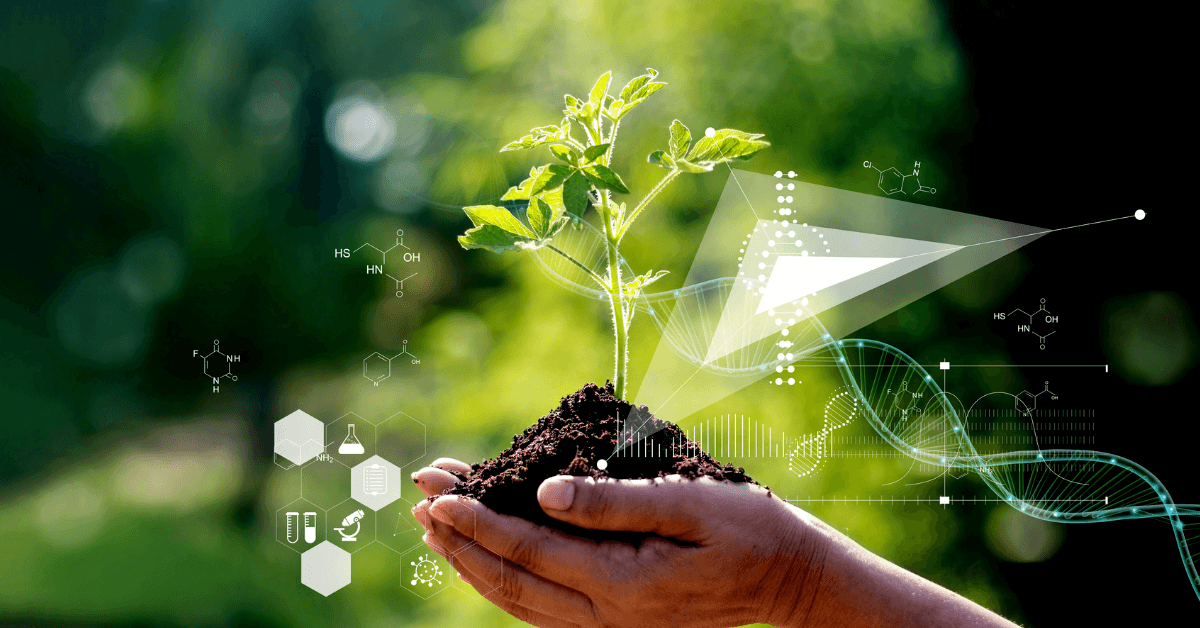Understanding the Characteristics of Plant Growth Regulators | Part 2
- March 31, 2023
- Yusif Jaouni
- Posted in Plant Nutrition and Management

Are you looking to increase your harvest? Knowing the characteristics of plant growth regulators (PGRs) is essential in optimizing growth and yield. PGRs are products used to adjust and control how plants develop, allowing farmers to manipulate their crops in ways that weren’t possible before. In this blog, we’ll be talking about the types of PGRs available, their effects on plant development, and more!
Keep reading for all the details about plant growth regulators and how you can use them to get larger yields from your crops!
Defining Plant Growth Regulators (PGRs) Characteristics: What Are They and How They Work
Plant growth regulators, also known as phytohormones or plant growth hormones, are fascinating compounds that are naturally produced by plants themselves.
These simple organic molecules have a variety of chemical compositions and play a critical role in the differentiation and elongation of cells, the formation of leaves, flowers, and stems, the wilting of leaves, the ripening of fruits, and even seed dormancy. Essentially, PGRs are what allows plants to grow and develop in a controlled manner.
As such, they have powerful applications in agriculture, helping farmers to increase crop yields and promote plant health. But how exactly do they work? That’s what we’ll be exploring in this article.
5 Different Types of Plant Growth Regulators
Plant growth regulators play a significant role in plant health. These hormones, such as auxin, gibberellins, cytokinins, abscisic acid, and ethylene, play a vital role in regulating plant growth and development.
While they all have their specific effects, some can control cell division and elongation, while others regulate the process of seed dormancy. In recent years, another group of hormones called brassinosteroids has been synthesized, which has shown promising results in agriculture.
4 Tips for Optimal Utilization of Plant Growth Regulators
To get the most out of them, there are some tips and tricks you should know.
- Always follow the label instructions carefully, as overuse or misuse can have negative effects on your plants.
- Use the right type and amount of plant growth regulator, depending on the plant species, growth stage, and desired outcome.
- Make sure to apply the regulator at the right time of day and weather conditions, to ensure maximum uptake and efficacy.
- Store the regulators properly, away from heat, light, and moisture, to maintain their quality and potency.
By keeping these tips in mind, you can harness the power of plant growth regulators to achieve the best results for your plants.
In conclusion, PGRs are essential components of keeping plants happy and healthy, and if used correctly can have amazing results.
There’s a lot to know about Plant Growth Regulators, but hopefully, this blog post was able to provide you with some helpful information. In the next article, we’ll dive deeper into the Types of Plant Growth Promoters and Plant Growth Inhibitors. If you missed the basics check out Uncover the Basics of Plant Growth Hormones.
Frequently Asked Questions
A plant growth regulator works by mimicking or blocking the natural plant hormones that regulate growth and development. This can result in altered growth patterns, increased fruit set, delayed senescence, or other desirable outcomes. The specific mode of action depends on the type of regulator and the target plant species.
Several factors can influence plant growth, including sufficient sunlight, water, and nutrients. Proper soil fertility, temperature, and air circulation also play a role. Additionally, using plant growth-promoting products such as fertilizers, hormones, and microorganisms can stimulate faster and bigger growth. Genetics can also determine a plant’s potential size and growth rate
Plant growth regulators (PGRs) do not contain any nutrients, as they are not a source of energy or building blocks for plant growth. Instead, PGRs work by influencing plant hormone levels and responses, resulting in changes in growth patterns, fruiting, or other desirable outcomes. However, PGRs are often used in conjunction with fertilizers and other nutrient supplements to enhance plant growth and development.
Subscribe to Miller’s Blog!
Don’t Miss Out! Subscribe to Miller’s Blog to be notified when we publish a new post.